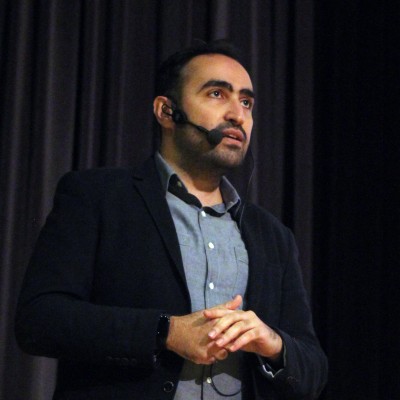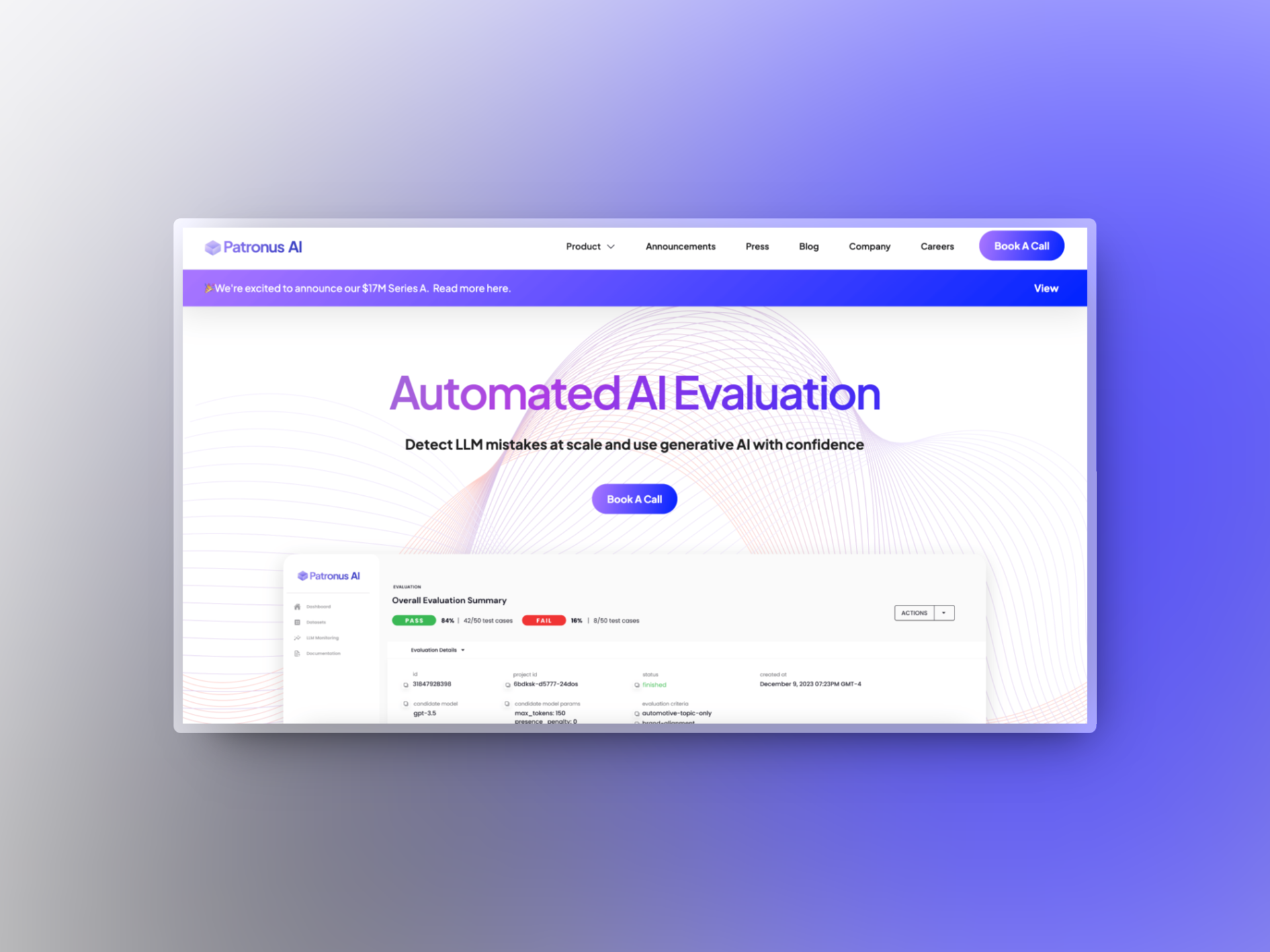 Financial Services
Financial Services
- Insights
- Technology
- Article
A New RPA Center of Excellence Approach for Global Companies

81% of multinational companies invest in Robotic Process Automation (RPA) technology to achieve their financial savings targets [1]. Why? Because developing an RPA bot and integrating it on the UI side is easy. However, some challenges emerge when these bots are used widely within the company. Using RPA solutions without a central control mechanism can lead to the following problems, especially in multinational companies:
- Missed opportunities or lost negotiation power during licensing agreements
- Wrong evaluations of needs during product selection
- RPA solutions that are not suitable for the organization
- Incorrect identification of the required automation need
- Developing only with a process-focused perspective
Such untracked RPA usage scenarios result in the formation and growth of “shadow” RPA epicentres, unaware of other RPA initiatives within the company. This can quickly turn the short-term benefits into unexpected additional costs over the long run due to inefficient RPA development and challenging license infrastructure follow-up. Organizations are moving towards RPA Center Of Excellence (RPA CoE) structures to address these issues.
The purpose of RPA CoE in organizations is simple: To provide a roadmap, vision, and support to realize innovation in the automation field. Easier said than done. There are various globally accepted RPA CoE approaches. Determine what best suits your work style, culture, and automation expectations. If configured well, an RPA CoE structure can provide the following benefits [2]:
- 50% decrease in RPA bot development time
- Up to 4 times increase in savings thanks to the automated processes
- Up to 75% increase in the number of automated processes
- Up to 55% savings thanks to effective use of the license and infrastructure costs.
At DefineX, we developed a comprehensive RPA CoE model that meets each organization’s unique needs and matches the organization’s expectations and culture to build a well-configured structure. This article elaborates on this approach and shares some best practices and lessons learned and observed throughout our projects.
Customer Testimonial
“By-the-book solutions for building CoE structures suit only some companies. It requires fine-tuning these structures according to the company’s context, culture, and automation needs. Suppose you, as a multinational company, think that your company has an inefficient RPA setup. In that case, I suggest you give DefineX’s approach a try.”
A CASE IN POINT: SELECTING THE RIGHT AUTOMATION SOLUTION FOR A MULTINATIONAL CLIENT
Problem Definition
One of our multinational clients uses RPA solutions with multiple development teams in different countries. Each team has its own budget, approach, and way of working. Our client requested support from DefineX to streamline this heterogeneous environment.
We conducted a 6-week study and focused on three fundamental areas:
- Creating company-wide awareness regarding the services provided by RPA teams
- Cost monitoring of RPA teams
- Developing the automation needs
Identifying how automation needs are addressed
First, we organized workshops with IT departments and identified how they fulfill the incoming automation demand. Additionally, we surveyed developers and business units regarding the RPA services and the automation technologies leveraged.
It became apparent to us that the expectation from an RPA solution was more than it could carry. So, we did some educational series to explain that RPA solutions are just one of the solutions among many automation technologies. The below comparison chart is one of the figures we demonstrated during those sessions.
| Capability | BPMS | API GATEWAY | RPA |
| Task Automation Use of software to reduce the manual handling of simple tasks |  |  |  |
| Orchestration Rule or decision-based coordination of the various systems and software |  |  |  |
| Process Discovery Giving insights about current business processes |  |  |  |
| UI Interaction Reflecting the actual user experience after an interaction via a user interface |  |  |  |
| Process Monitoring Evaluation of the process of a program or intervention |  |  |  |
| Integration Integration with external systems or services |  |  |  |
If the only tool you have is a hammer, you tend to see every problem as a nail. RPA is only one of your hammers, and you need to leverage it in line with all other automation solutions, as seen in the figure below. This will yield more efficient results.
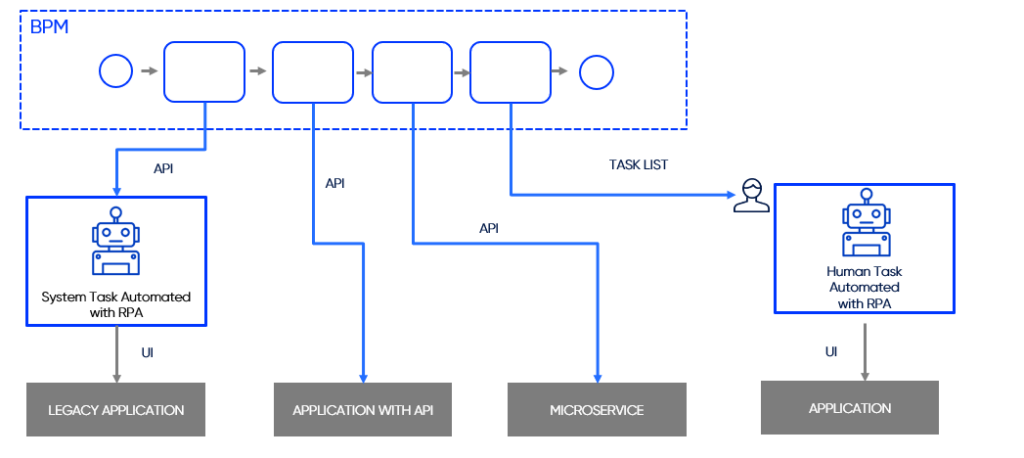
Automation Technology Decision Tree
How can you select the right automation solution? At DefineX, we have an asset called “Automation Technology Decision Tree,” which helps our customers utilize the right automation technologies in the right processes. It asks various questions to the user and directs him to the ideal technological solution. The below picture depicts one of its evaluation branches.
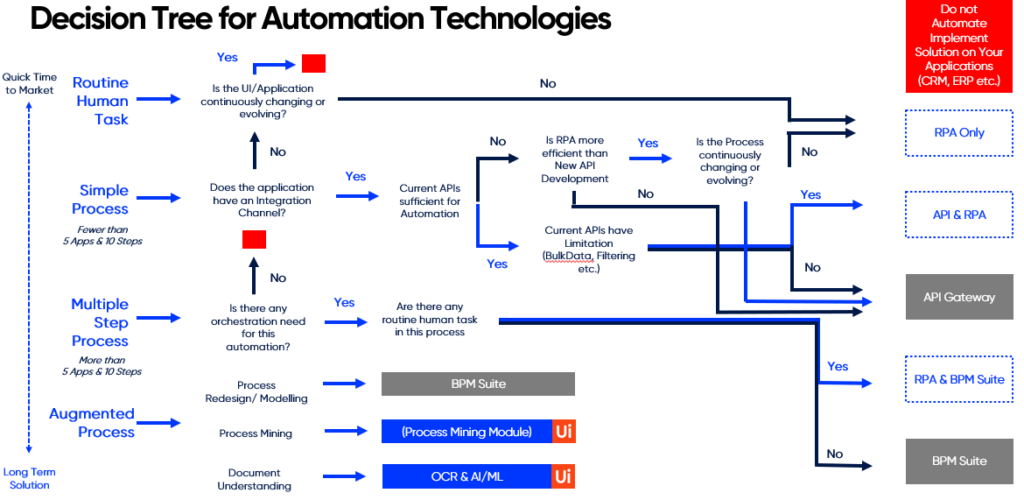
The tool further proceeds with particular questions for each technology. For example, it queries various business and technology items and comes up with an RPA suitability score. This score of 3.5 or above confirms that RPA is the right choice.
Defining Current Situation
In the 3rd stage, we evaluate the results of the survey we executed and the outcomes of the workshops we conducted. The objective is to identify the correct CoE needs. The effects on the RPA development side were as follows:
- While there should be more than one metric required for efficiency tracking, it was determined that only one was used.
- 25% of the RPA developers said they could use different RPA technologies.
- We identified that capabilities like analytics, NLP, machine learning, and process discovery should be more utilized.
- We observed a need for more knowledge and awareness within the company. While 50% of the company believed there were predefined development standards and documentation templates, the other half argued the opposite.
- The most common time-consuming problem in the RPA development processes was unclear and non-standard requests.
The business units’ perspective revealed:
- The gap between the conducted business analysis and the actual process
- Inadequate knowledge about the benefits of an RPA solution
- An expectation of standardization and need for fast time-to-market
Definition of the Approach
In the final step, we needed to determine the proper CoE approach to work in the client’s organization. We evaluated 3 CoE approaches: centralized, hybrid, and decentralized.
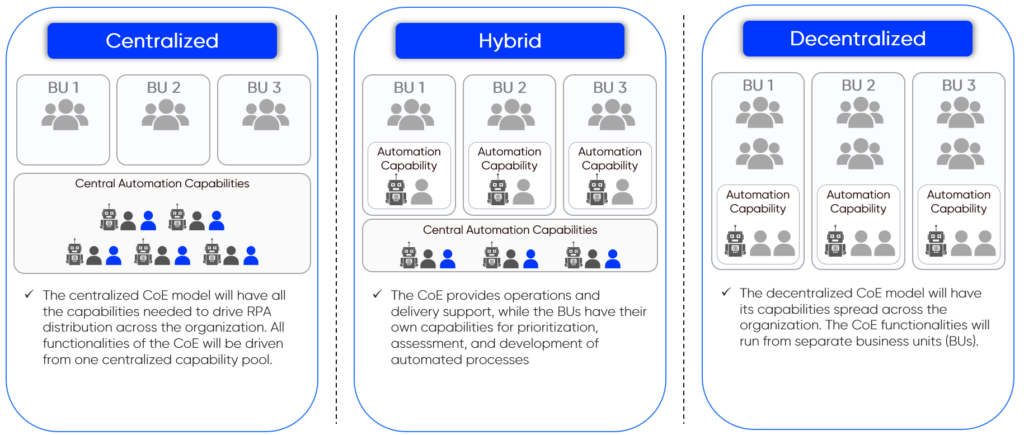
Of these three alternatives, we eliminated the decentralized model, given the organizational structure of our client and service versatility in different markets. For an organization at this scale, it could bring complications for process management. Hybrid and Centralized models had their pros and cons. To get the best out of them, we created a new amalgam called: the “Agile-Centralized Model.”
Agile-Centralized Approach
With an Agile-Centralized approach, RPA developers, infrastructure teams, and administration services are collected at a central unit. RPA analysts are positioned among the business units in a decentralized way.
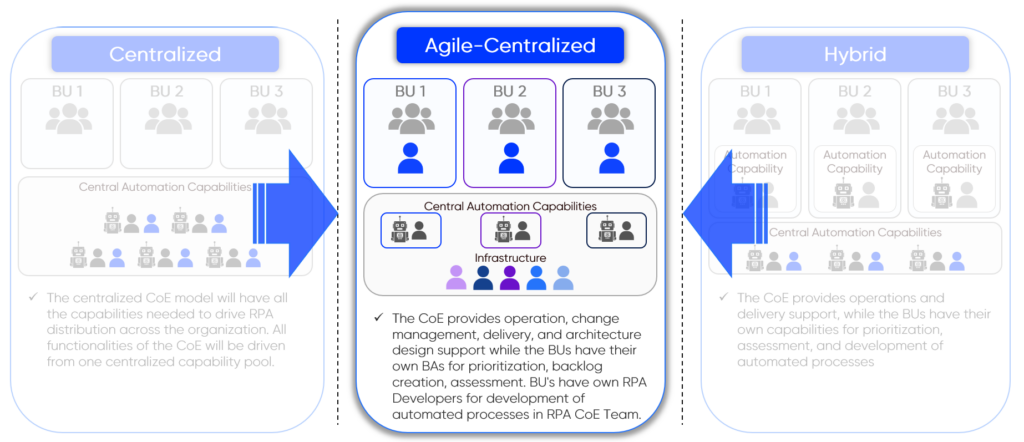
Business Analysis Process
Having identified the deficiencies in the business processes analysis, we decided placing business analysts closer to the business units would be better. Hence, in the Agile-Centralized structure, business analysts are positioned within the units making the automation request. On the other hand, they are linked with the CoE, which eases complying with the CoE standards and documentation templates, and speeds up the development process. Furthermore, prioritizing the demand becomes the responsibility of the business analysts.
Development Process
Collecting all development capabilities at a central unit improves developer capabilities. It enhances resource utilization and allocation (the right competencies for the right business needs at the right time).
One of the main concerns for centralized structures was the speed of development. We organized RPA developers to serve account-based and accelerate growth based on requests from numerous departments in different countries. At the same time, we designed an agile organization structure to fit the same business units. This structure enables rapidly fulfilling business demands and brings speed to communication, development, and feedback loops as teams get used to each other.
In-House Automation Solution Dissemination
The RPA team was expected to expand and serve numerous countries. To facilitate this, we introduced a new role called RPA Champions. They are responsible for promoting the CoE mission to the new business units, leading their onboarding process, and managing communication with the upper management level. The main objective is to create awareness of CoE capabilities and use them widely. Furthermore, RPA Champions also ensure business units do not seek or use solutions other than the ones in the RPA CoE service catalog.
Central Administration & Infrastructure
The administrative tasks within CoE are planned, developed, and standardized via a bot. This streamlined the processes and brought cost savings. Furthermore, centralized focus resulted in synergies in infrastructure investments and license costs.
Having met the current business needs and expectations with the Agile-Centralized model, we started thinking about the long-term horizon. Acceleration in digitalization and the introduction of new technologies might drive additional requirements for organizations, which can translate into different alternative automation technologies. So, how does the Agile-Centralized model enable this?
Getting ready for the future with the Agile-Centralized Model
As the usage of AI and machine learning technologies increase in automation, it is expected that RPA’s efficiency will improve. However, we cannot think about the fate of automation only on an RPA basis. The future of automation is tagged under the Hyperautomation concept.
Hyperautomation is a business-driven, disciplined approach that organizations use to rapidly identify and automate as many business and IT processes as possible. Hyperautomation involves the orchestrated use of multiple technologies, tools, or platforms, including artificial intelligence (AI), machine learning, event-driven software architecture, robotic process automation (RPA), business process management (BPM), and intelligent business process management suites (iBPMS), integration platform as a service (iPaaS), low-code/no-code tools, packaged software, and other types of decision, process and task automation tools[3].
Let’s delve into this.
Until 2024, the organizations will save up to %30 by using business processes redesigned as Hyperautomation technologies[4]. In fact, Hyperautomation comes with a toolbox. Companies will need RPA, Process Discovery, BPM, AI services, low-code platforms, and API development technologies. This means companies need to focus on automation needs from a broader perspective. From this perspective, how RPA champions and business analysts are positioned in the Agile-Centralized model will help companies take the next step. Because CoE needs to understand the need for collaboration to build a Hyperautomation strategy. RPA champions and business analysts’ role of spearheading the automation requests can quickly drive these next-generation demands. The most significant catalysts of this transformation will be these roles.
CONCLUSION
RPA is a jump starter for multinational companies to address their automation needs quickly. As business units see the benefit and start automating processes, the solution’s governance becomes critical. This is where one needs to evaluate the CoE models. We introduced a new point of view called the Agile-Centralized Model. It combines the benefits of Centralized and Hybrid CoE approaches in a single solution. It is a visionary approach because the Agile-Centralized Model opens up a new chapter on the road from RPA CoE to the Hyperautomation era.
Sources
(1) HfS Research in Conjunction With KPMG, “State Of Operations and Outsourcing 2018, March 2018
(2) Source: Horses For Sources-The State for Automation and AI Study
(3) https://www.gartner.com/en/information-technology/glossary/hyperautomation
(4) https://www.gartner.com/en/newsroom/press-releases/2021-04-28-gartner-forecasts-worldwide-hyperautomation-enabling-software-market-to-reach-nearly-600-billion-by-2022
